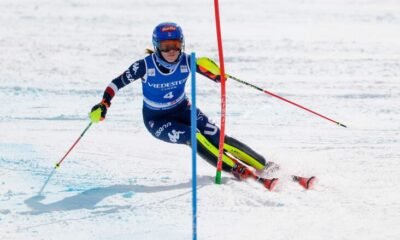Blog
Led Zeppelin’s 1975 double album, “Physical Graffiti,”
 Led Zeppelin’s 1975 double album, “Physical Graffiti,” stands as a monumental testament to the band’s musical evolution and artistic daring. Jimmy Page, the band’s legendary guitarist and sole producer on the record, had an expansive palette of gear that he used to sculpt the rich, varied sound of this album.
Led Zeppelin’s 1975 double album, “Physical Graffiti,” stands as a monumental testament to the band’s musical evolution and artistic daring. Jimmy Page, the band’s legendary guitarist and sole producer on the record, had an expansive palette of gear that he used to sculpt the rich, varied sound of this album.
Jimmy Page’s Guitar Arsenal on Physical Graffiti
Jimmy Page’s guitar setup during the “Physical Graffiti” era was anchored firmly by his iconic 1959 Gibson Les Paul Standard, famously nicknamed “Number One.” This guitar was Page’s main weapon throughout the sessions and subsequent tours. It was prized for its tonal versatility and powerful sound, featuring a slimmed-down neck that Page personally modified for better playability. The Les Paul gave Page the ability to deliver everything from blistering high-pitched solos to rich, warm riffs integral to the album’s hard rock and blues elements.
In addition to the Les Paul, Page also sporadically used his Fender Telecaster. Known for its bright, cutting tone, this guitar was famously used on the original recording of “Stairway to Heaven” from the previous album but also figured into live and studio settings around the Physical Graffiti period. The Telecaster lent a different texture to the songs, especially in tracks needing clean, articulate note definition.
Page also incorporated the Gibson EDS-1275 double-neck guitar on this album, a striking instrument that allowed him to switch seamlessly between 6- and 12-string guitar parts. This guitar was crucial for live renditions of songs that required both guitar types, tying in closely with the layered guitar work on the record.
Effects and Amplification
To expand his sonic capabilities, Page used a variety of effects. Notably, the Tone Bender Professional MK II fuzz box contributed to his gritty, aggressive sound on numerous tracks. The Echoplex tape delay pedal was critical for adding spaciousness and echo effects, which enhanced the psychedelic and bluesy textures of the album. Additionally, Page used a pedal steel guitar on earlier related sessions, showing his willingness to experiment with different stringed instruments and sounds.
Amplification was mainly through 100-watt Marshall amplifiers, which provided the robust and crunchy tone that became synonymous with Led Zeppelin’s rock sound. These amps helped Page push his guitars to both powerful distortion and clear, ringing clean tones.
Studio Innovation and Production
Page took advantage of the time spent recording in Headley Grange, a country house where the band could take a laid-back approach to improvisation and experimentation. This setting allowed him to tweak and layer guitar parts meticulously, resulting in complex, textured arrangements that blend hard rock, blues, folk, and even orchestral sounds.
The combination of his gear and production prowess allowed Led Zeppelin to not only showcase their signature sound but also to push into new musical frontiers on physical Graffiti. Page’s role extended beyond guitarist to visionary producer, managing the album’s rich sonic layers and diverse styles.
In summary, the key gear from Jimmy Page during the Physical Graffiti era includes:
-
1959 Gibson Les Paul Standard (“Number One”)
-
Fender Telecaster (used especially for 12-string parts and distinctive solos)
-
Gibson EDS-1275 double-neck guitar
-
Tone Bender Professional MK II fuzz box
-
Echoplex tape echo
-
100-watt Marshall amplifiers
This arsenal of guitars, effects, and amps underpinned some of rock’s most enduring and innovative music, clearly marking Physical Graffiti as a high point for both Led Zeppelin and Jimmy Page’s legendary career. The album’s diverse soundscape owes much to Page’s mastery over his gear and his creative production choices.
-

 Blog5 months ago
Blog5 months agoPat Kelsey sends a strong three-word fiery message to the Louisville basketball’s team after their Cardinals 14th win…
-

 Blog7 months ago
Blog7 months agoNetflix releases “The Underdog,” a much-anticipated documentary about Drew Brees. slated for publication on the 25th
-

 Blog5 months ago
Blog5 months agoMikaela Shiffrin responds to cross-country skier Jessie Diggins’ letter following her failure to secure a solitary podium finish at the FIS Nordic Worlds
-

 Blog3 months ago
Blog3 months agoBehind the Turns: Netflix’s Upcoming Documentary on Mikaela Shiffrin’s Fights, Fears, and Love
-

 Blog4 months ago
Blog4 months agoLegacy Tour Led Zeppelin has officially confirmed their 2026 reunion tour, which will be their first extensive live performances since 2007. The “Led Zeppelin Legacy Tour 2026” will begin on June 10, 2026, at Los Angeles’ SoFi Stadium.
-

 Blog5 months ago
Blog5 months agoWomen’s Slalom Run 1 at the FIS Alpine Skiing World Cup: Are
-

 Blog5 months ago
Blog5 months ago“Courtside to Aisle-Side: Tyrese Haliburton and Jade Jones Set New Wedding Date”
-

 Blog7 months ago
Blog7 months agoFederica Brignone: “I’m fine, but my return to skiing is far off.”
